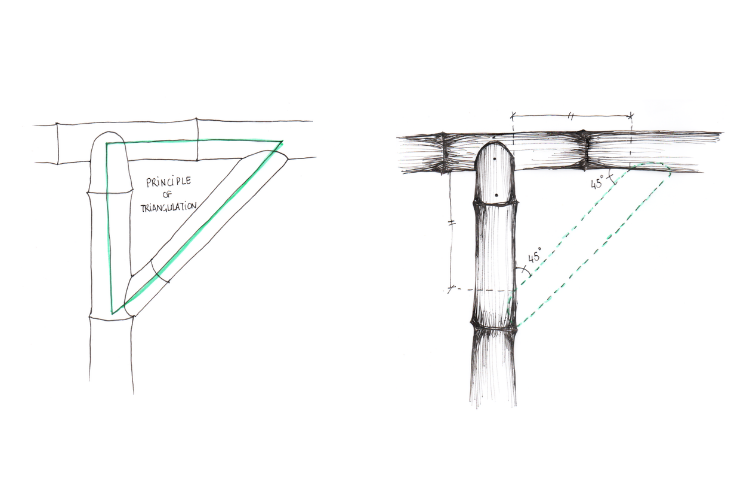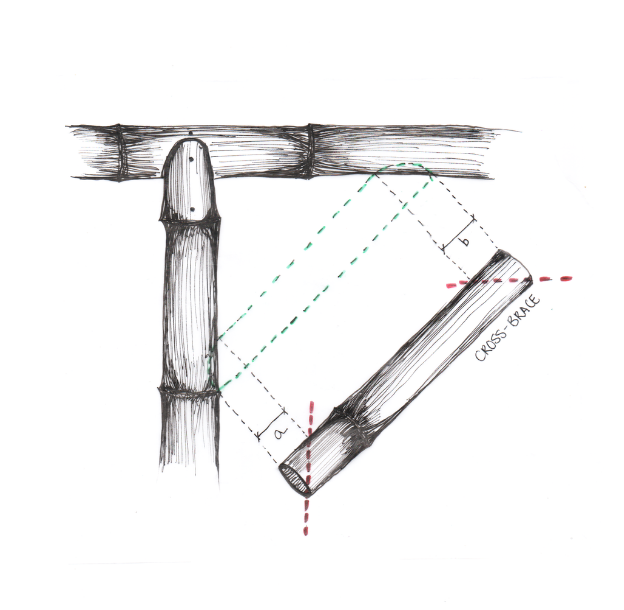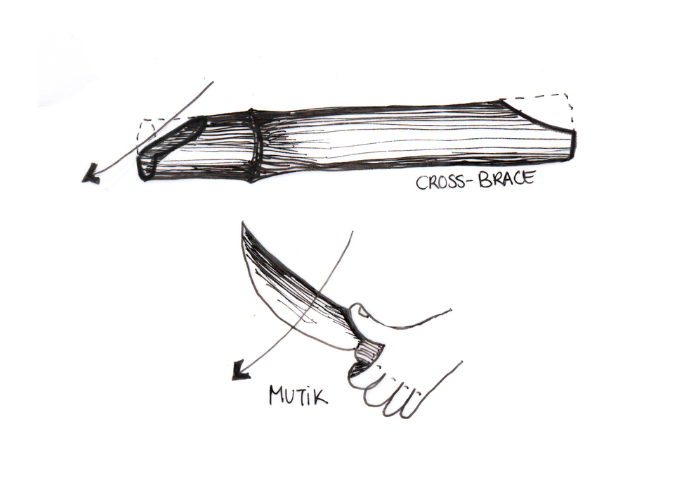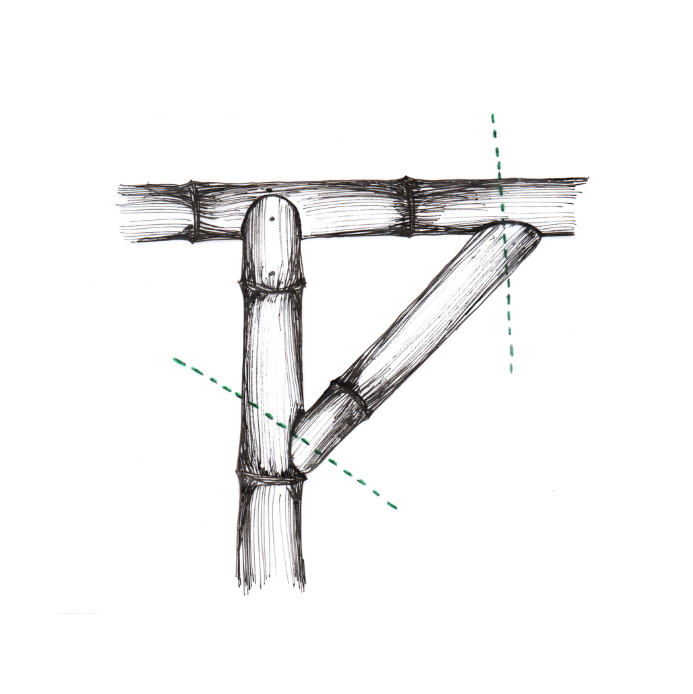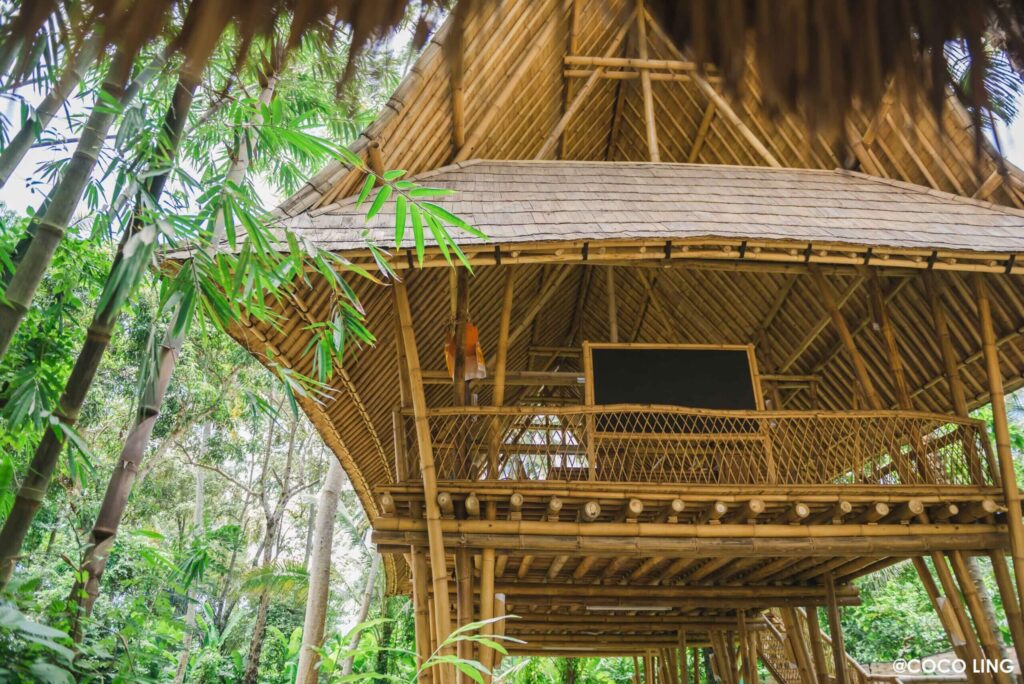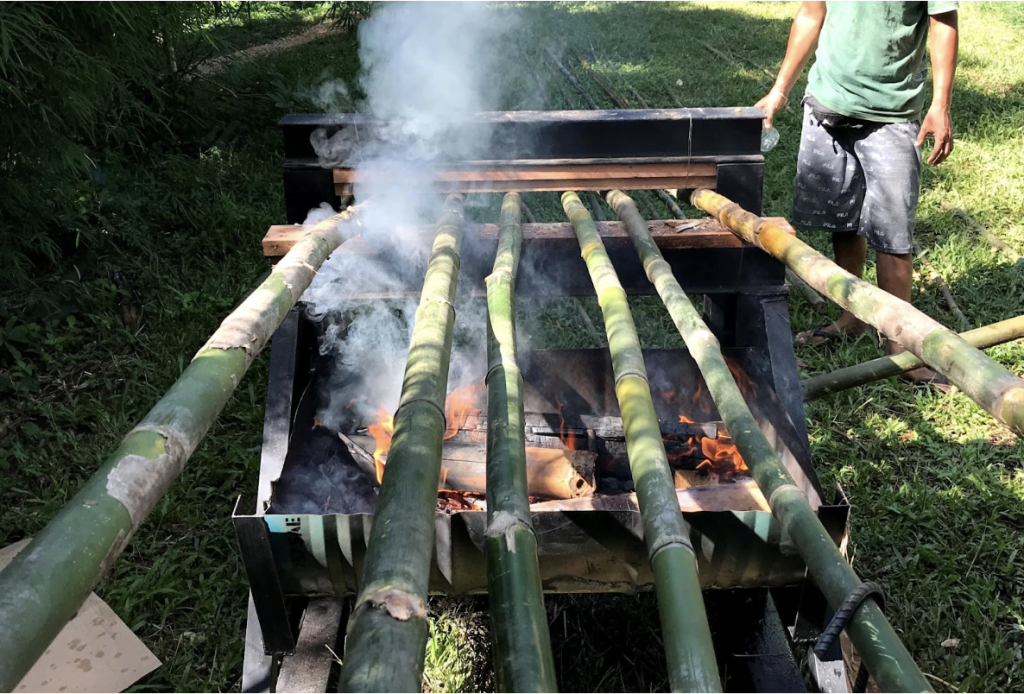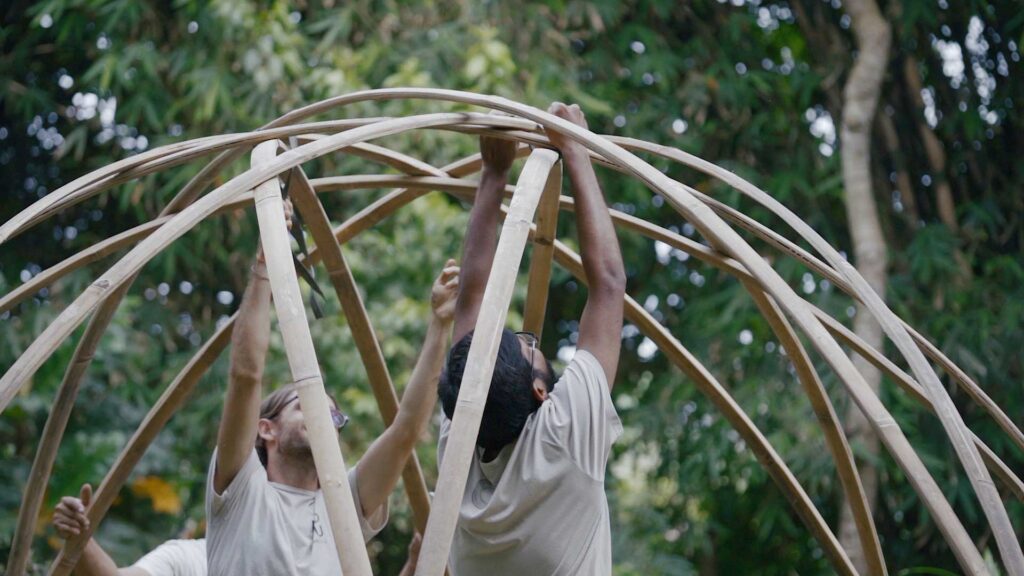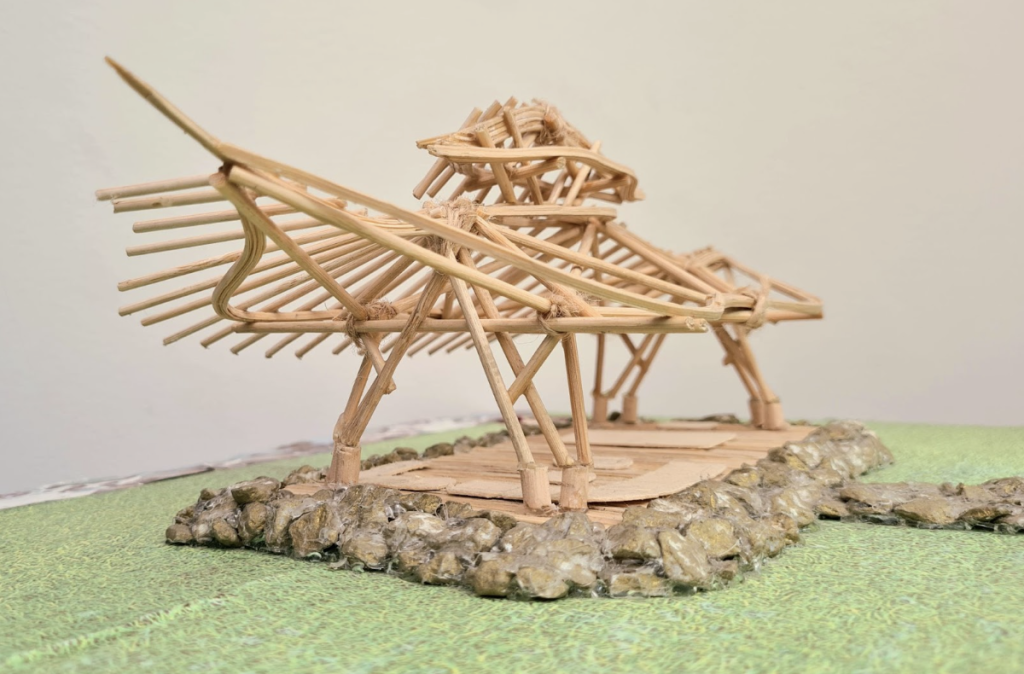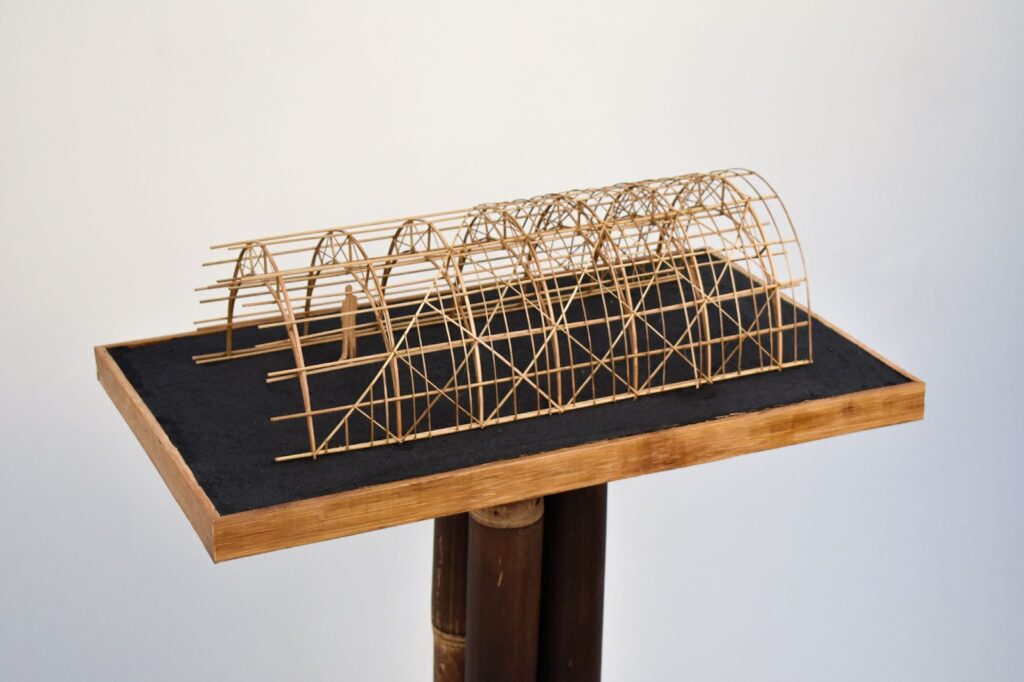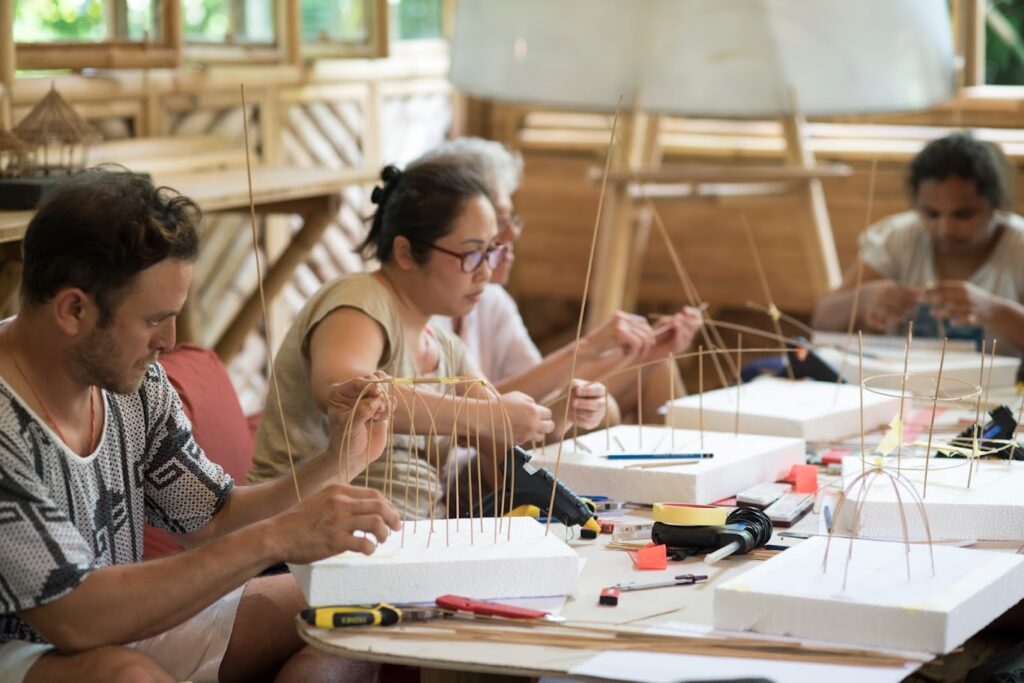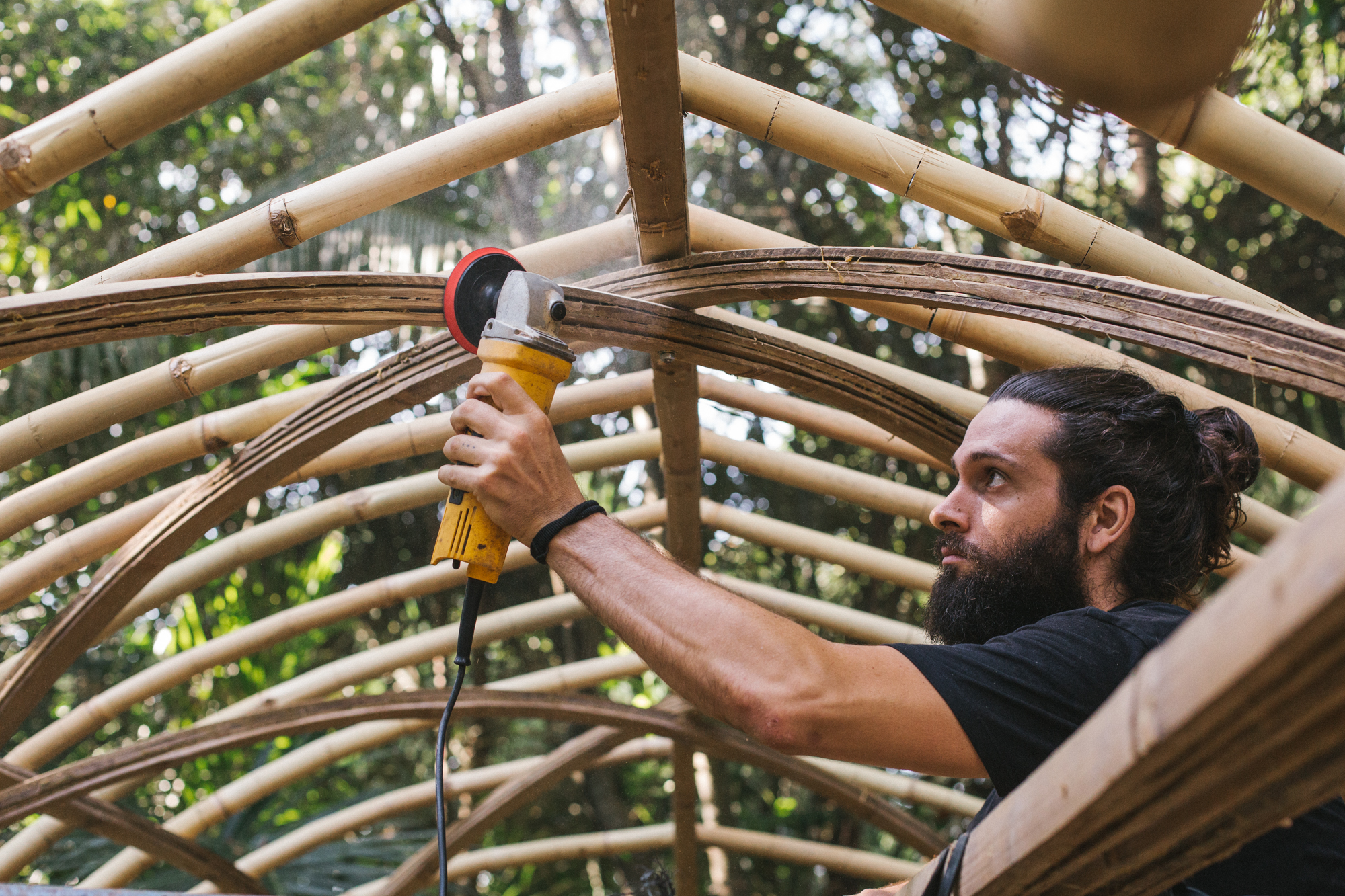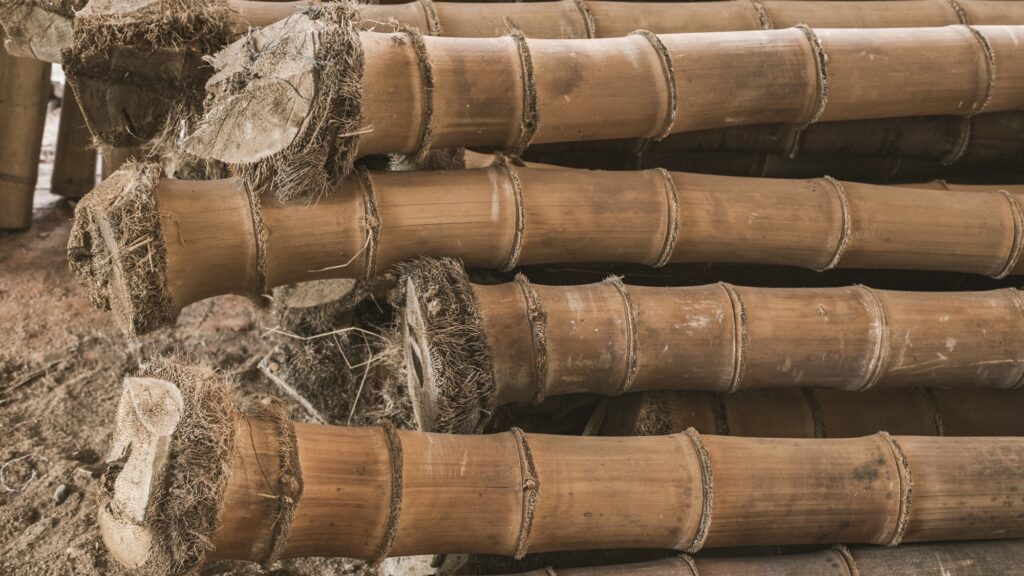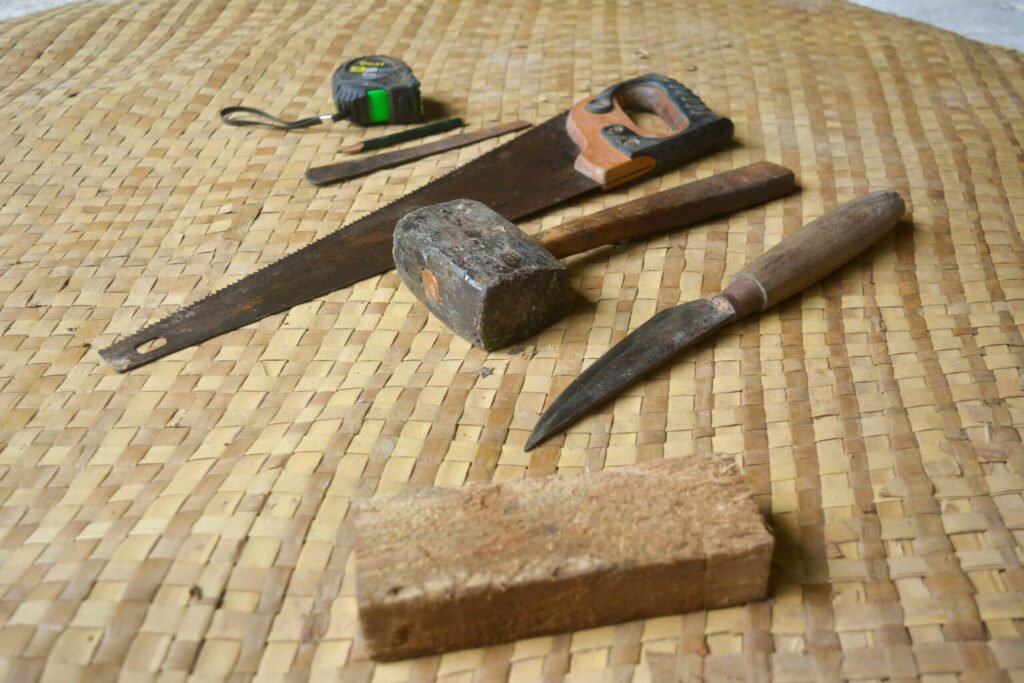Your Handy Guide to Crafting Bamboo Fish Mouth Joints
By Cécile Durand | June 14, 2019 | Carpentry and Processing -
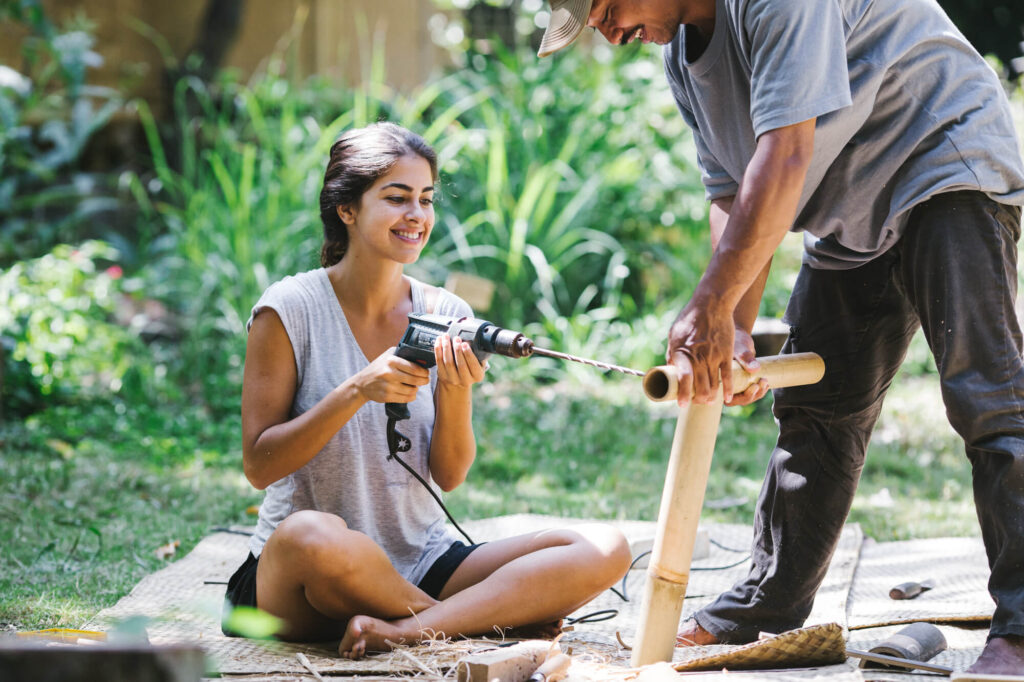
The Fish Mouth is named after the way one bamboo piece “bites” into its counterpart. This traditional joinery technique makes use of the bamboo’s intrinsic properties by evenly distributing loads across the full section of the bamboo culm.
The art of making this joint can be broken down into the following steps:
1. Gather The Right Materials:
- Four pieces of treated dry bamboo, three have a larger diameter than the last one. For instance, with a Petung piece of 10 cm diameter, try to have a smaller piece of around 6 cm.
- An electric drill, with bits of 3 to 4 mm diameter
- A mutik (traditional bamboo carving knife), chosen according to your dominant hand (a)
- A curved chisel (b)
- A hammer (c)
- A few wooden dowels (at least 10)
- A pencil (d)
- A ruler/tape measurer (e)
- A hand saw (f)
- Protective wear
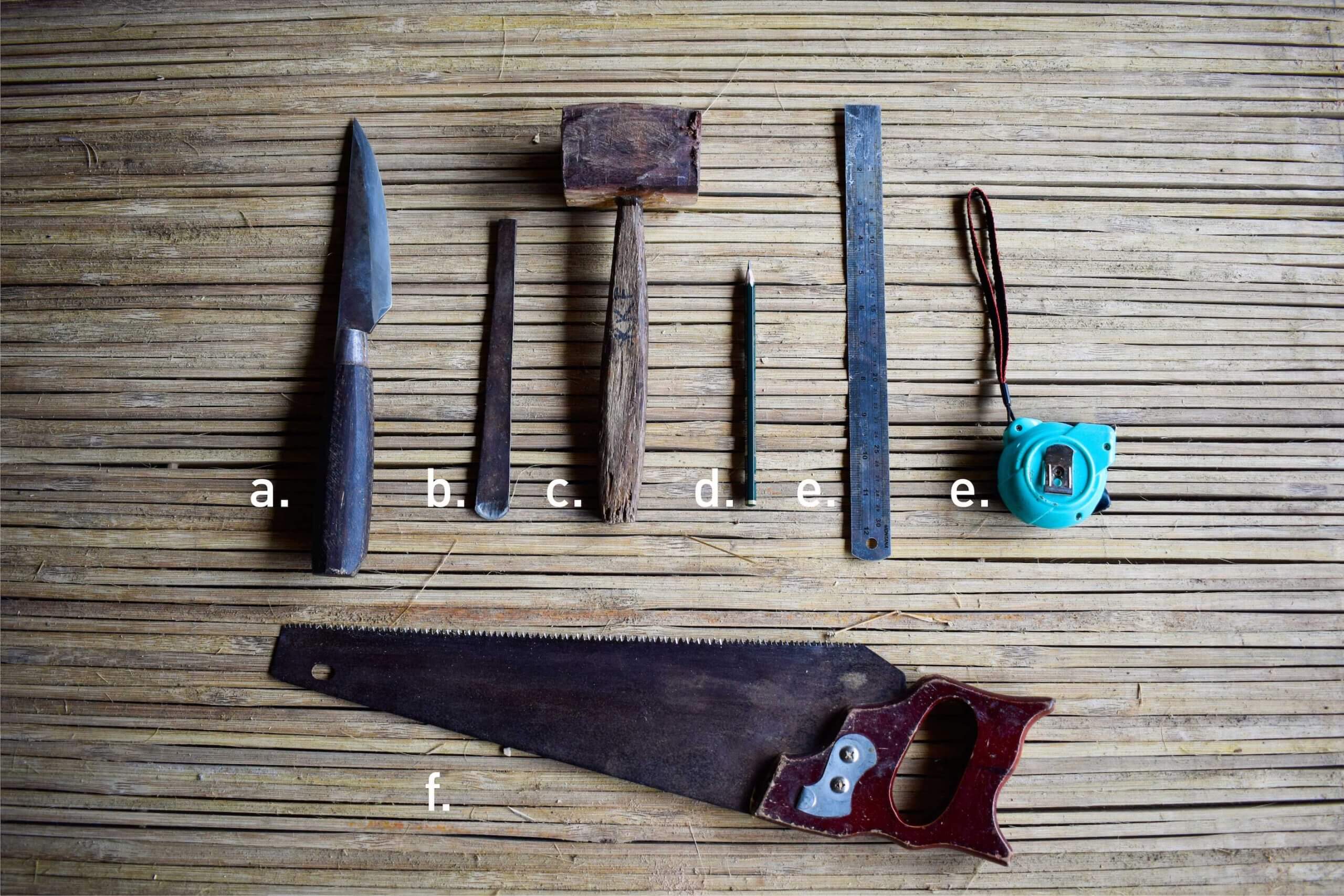
2. Prepare The Fish Mouth:
- i. To add strength to the joint, the top of the mouth on the column should be cut close to a node (use the diameter as reference).
Then, divide into four equal parts.
Between the node and the end of the column, draw a line around the surface. The distance from the end of the column and the line should be the same as the radius of the beam.

- ii. With your pencil, draw an approximate shape for your fish mouth.
Hold the column and saw along the diagonals

- iii. Then, carve out the mouth’s shape in upwards motions (working in the same direction as the bamboo fibers)
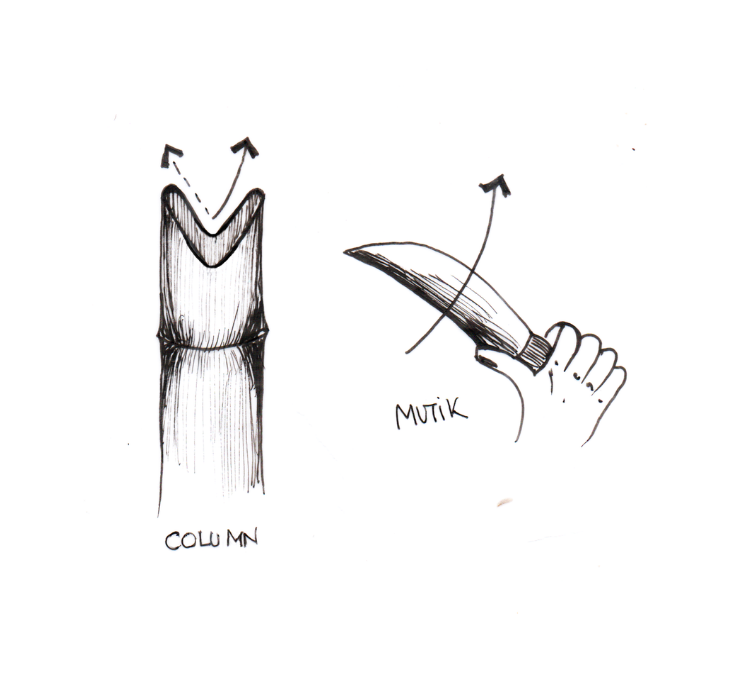
3. Make The Hole Joint:
- i. Take the third, smaller piece of bamboo. It will act as the tie between the column and beam.

- ii. Draw out its diameter on the beam, where the fish mouth will sit. Taking the chisel and the mutik, carve out the “hole”.
Slot the piece in, it should fit in tight and all the way through to the opposite culm wall.
Then, drill and dowel.

- iii. Slip the column over the smaller bamboo piece to secure the fish mouth to the beam. Drill and dowel through the column and the small bamboo at opposite angles.
 In this form, the joint is commonly used for furniture design and smaller structures.
In this form, the joint is commonly used for furniture design and smaller structures.
4. Make The Cross-Brace:
If used in construction, the joint should be strengthened by adding a cross-brace between the beam and column at 45° angles with both the column and the beam.
- i. To achieve this, measure the same distance from the fish mouth to where the cross-brace will sit on both the column and beam.

- ii. Measure the values of a and b (see drawing). They determine the depth of your cut. Saw accordingly.

- iii. Using the mutik, carve out the right shape for the brace to sit on the beam or column.

- iv. Secure it by drilling in dowels.

The art of joining bamboo together relies principally on a strong understanding of the material as well as a careful hand (or two). The fish mouth joint testifies to beautiful craftsmanship and strength. It is something we are privileged to be able to share here and during our courses.

After finishing her Masters of Architecture at the University of Hong Kong where she wrote her thesis about bamboo construction for the rural communities of Bali. Cécile was part of the Bamboo U Team as a Management Consulting Professional until 2023.
OCTOBER 10-21, 2025
The 11 Day Bamboo Build & Design Course in Bali
In 11 days, we'll show you how to build bamboo structures we’ll share all that it takes to build with nature.
Start Anytime
The Bamboo Harvesting Course
The Bamboo Harvesting Course is an online step-by-step training to harvest and care for your bamboo clumps to ensure their longevity and productivity. This maximizes the potential of this beautiful grass as a rapidly renewable resource.Whether you are an architect, builder, or sustainability enthusiast, this mini course will enable you to utilize this rapidly regenerative resource as a durable construction material.It will help remove any fear or doubt about the durability of bamboo and help you build reputable bamboo structures that stand the test of time!

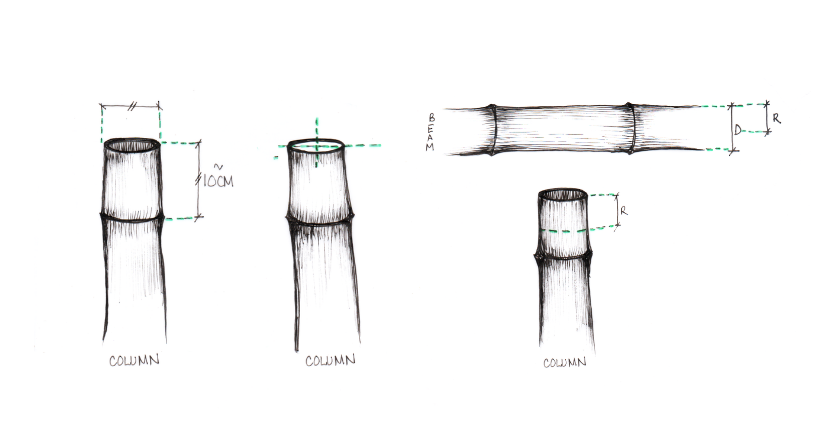
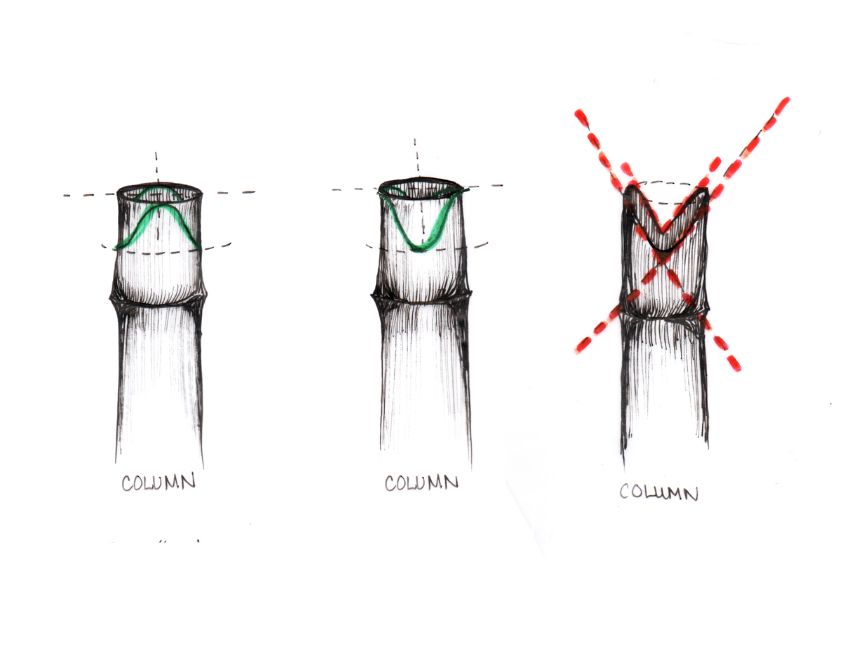
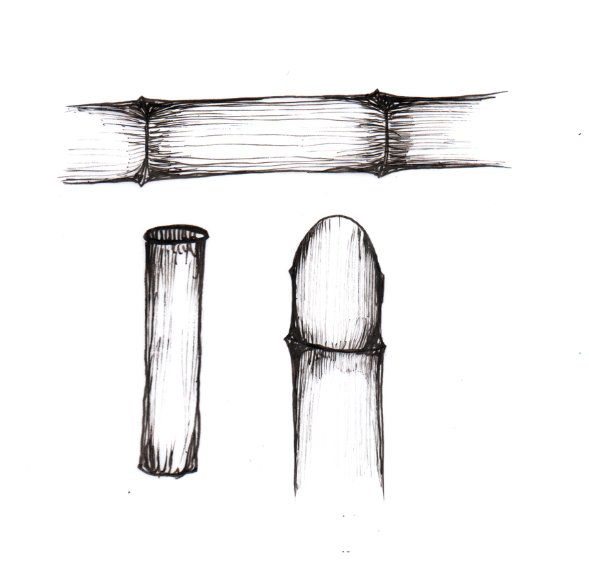
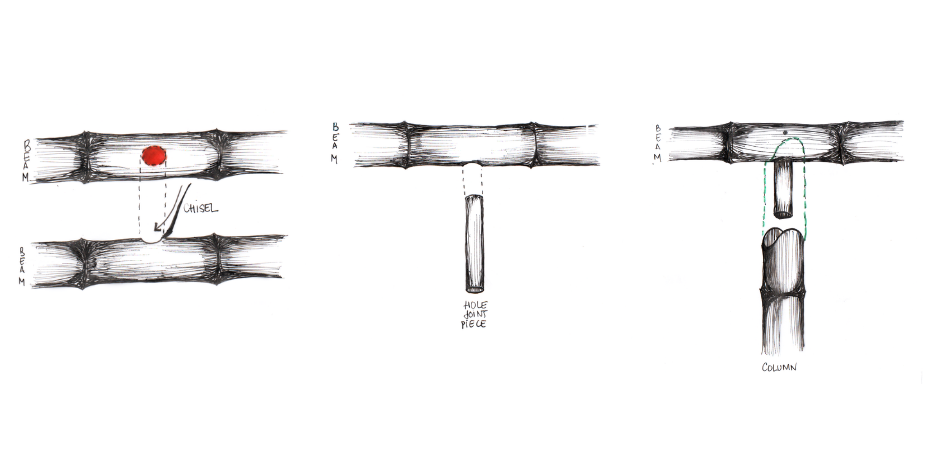
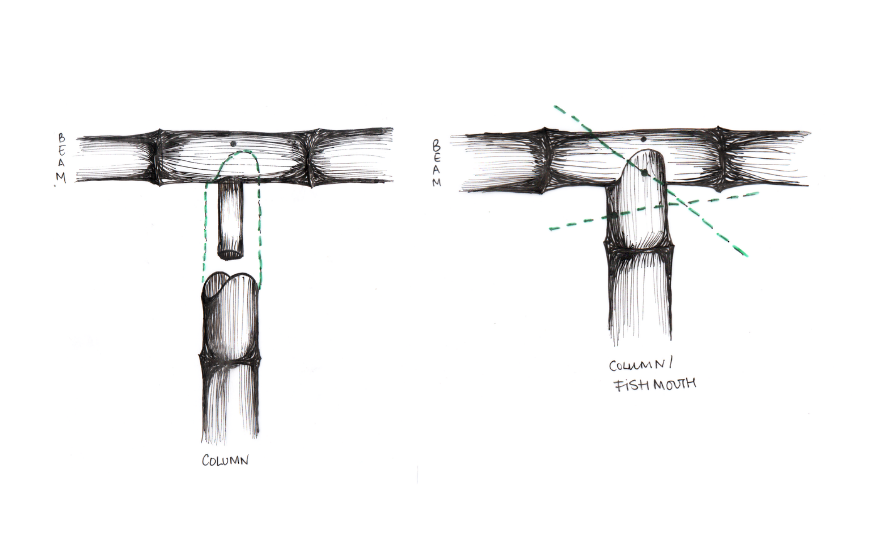 In this form, the joint is commonly used for furniture design and smaller structures.
In this form, the joint is commonly used for furniture design and smaller structures.